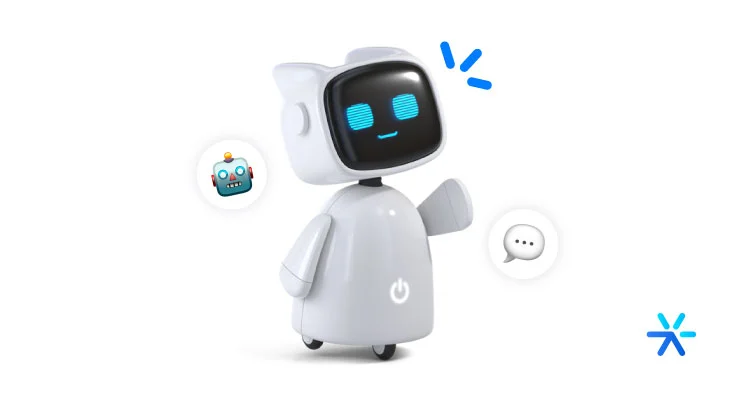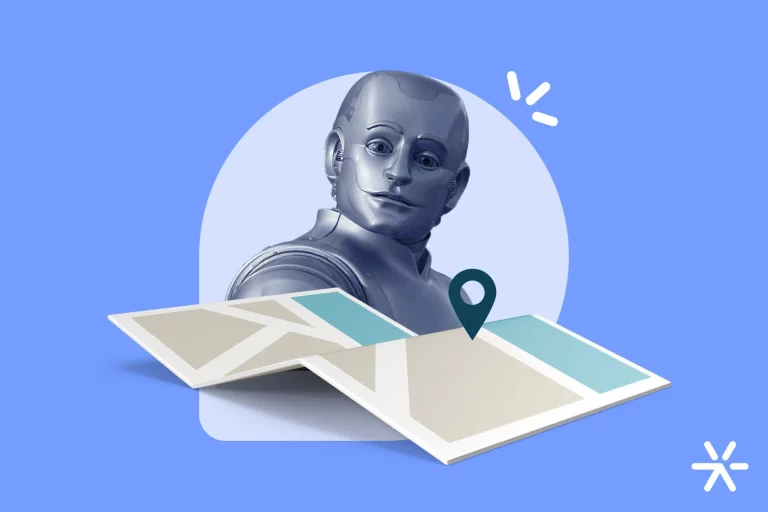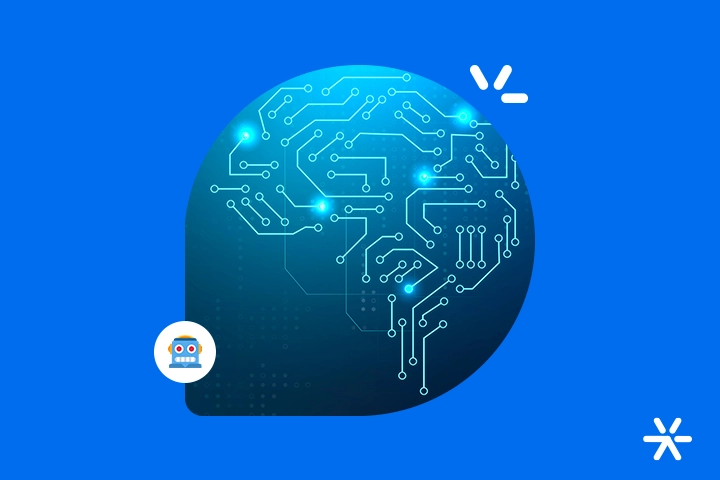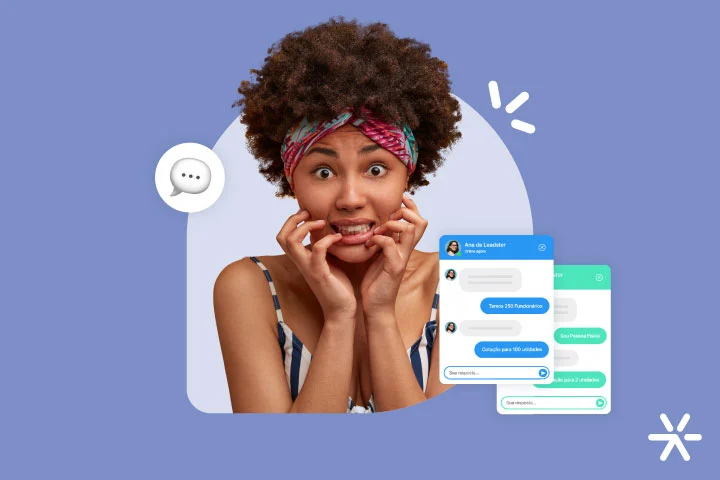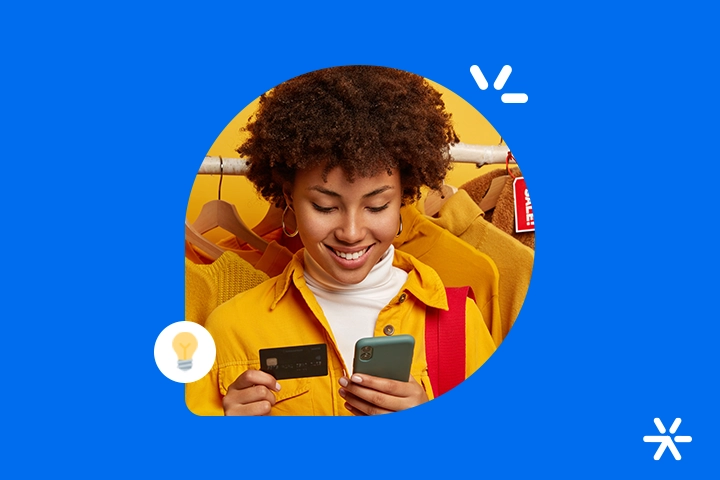Can you use ChatGPT Articles in Digital Marketing?
Many people are thinking — and doing — the same thing: can ChatGPT prompts be used for advertising production? 🤔
It’s easy to understand the curiosity and these uses of ChatGPT: it has great potential to speed up production while reducing costs.
The issue is that the use of ChatGPT results always comes with a rarely followed piece of advice: they need to be reviewed, edited, and optimized.
And let’s be honest: unfortunately, most agencies and marketing departments are always in such a rush that review ends up being a secondary concern. We go from “it needs to be reviewed” to “if possible, review it” very easily.
Today we will talk a little more about this and also about various other aspects of producing articles with ChatGPT.
We will address best practices for creating good prompts, what are the most obvious characteristics of ChatGPT prompts and articles and of course: how to review and optimize them to make them competitive according to Google’s latest updates if your focus is SEO.
Ready to start? Then now begins the era of machines 🤖 Come with me:
What is ChatGPT?
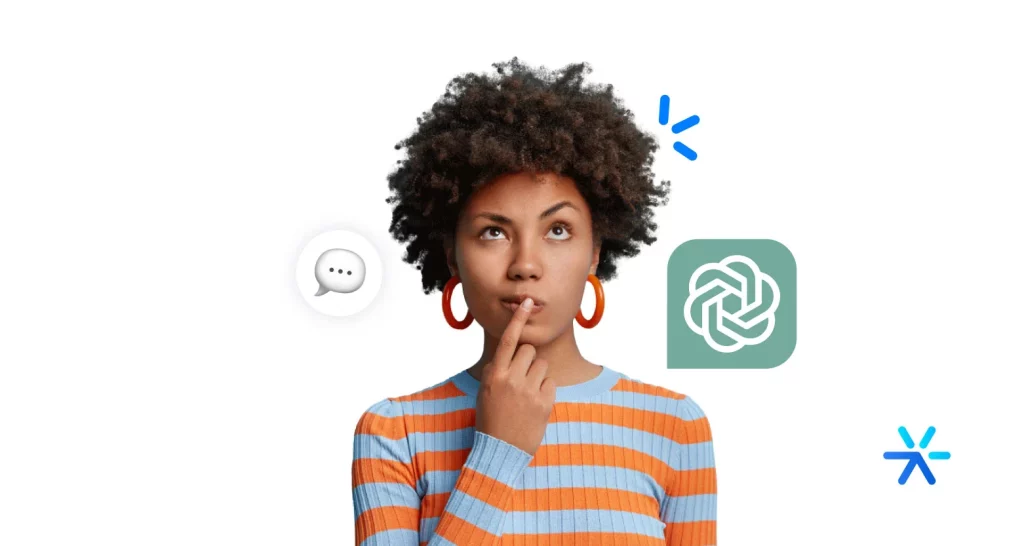
At this point, you probably already know what ChatGPT is, right? But it doesn’t hurt to update those who are not up to date with what it really is and to talk a little more about how it works.
In a very basic way, ChatGPT is an application developed by OpenAI, an Artificial Intelligence laboratory funded in part by Microsoft and another 16 venture capital investors.
ChatGPT is an Artificial Intelligence capable of providing in-depth answers to its users’ questions, using a large database.
But “answers” is a very limiting term for what ChatGPT does. It is capable of delivering a wide variety of articles according to the user’s prompts, including:
- Emails
- Reviewing existing texts
- Scripts for videos and commercials
- Social media posts
- Text for Google Ads and Social Ads
- Creating Personas
🤿 Dive deeper: Artificial Intelligence in 2024 - What to Expect
Among many other functionalities. As with anything involving language, the possibilities are endless with ChatGPT prompts.
But this is the very basics, and you probably already know all this. How about we delve a little deeper into how ChatGPT works?
Understanding Generative AI
ChatGPT is a Generative AI, just like other popular image creation tools like Midjourney and DALL-E 2.
The concept of Generative AI is simple to understand: it is the first category of Artificial Intelligence capable of producing something completely new based on your references and what you request.
Before the development of this technology, Artificial Intelligence could at most respond to some requests according to very well-determined flows.
For example: a customer service chatbot that could provide some simple answers to its users’ questions.
In the case of ChatGPT prompts, you are asking it to produce a completely new article, and this article will never be the same as any other it has produced.
This is quite different from what we are used to seeing with Artificial Intelligence and a significant advancement in this field.
But how exactly is this production done? You will find out now:
Understanding the Stochastic Language Model
This point is quite important to understand before we start talking about producing articles with ChatGPT. Here we will begin to understand its limitations, what it is capable of — and incapable of — doing.
The stochastic language model works through probabilities. It is the same model used in your phone’s autocomplete, for example.
Its operation is simple: the AI generates the first word that is closest to your prompt. Then, it generates the next word comparing the previous one and the prompt. Then, the third word comparing it with the second and the prompt. And so on.
So, ChatGPT operates word by word. Its reasoning is infinitely fast, but when it produces the first word, it has no idea what the tenth will be, or how it will end the reasoning.
Humans think in a very different way. When someone asks you something, you think about the question, formulate an answer in your head, and only then do you start talking.
This is the definition of the father of linguistics, Ferdinand de Saussure, about communication.
An emitter asks a question, which then reaches an interlocutor. The question enters through your ears, goes to the brain, is interpreted, and the answer is returned.
ChatGPT is different. It is not capable of making this preliminary interpretation, and it thinks as it delivers the result, using the user’s prompt as a significant guide.
I brought this topic up because it will be important later in the article. Knowing how ChatGPT “thinks” makes it easier to understand what it is really capable of producing, and where humans need to step in to resolve communication issues.
Do ChatGPT articles perform well on Google?
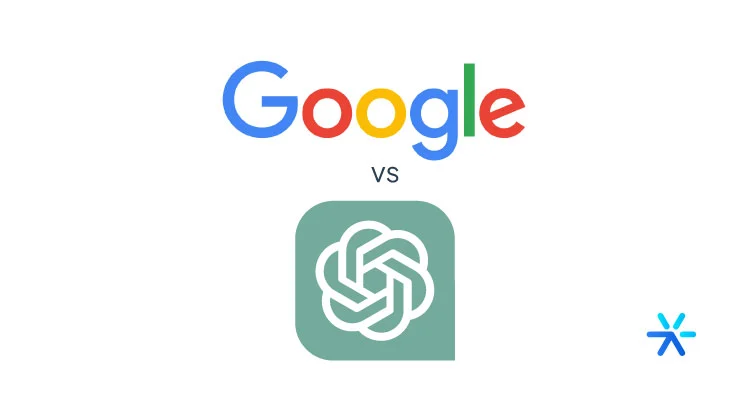
This topic is very trendy lately. Right when ChatGPT was launched, Google even issued a note saying it was working on updates to ensure that generic AI content wouldn’t flood the results pages.
This was and still is a real risk for the search giant. With ChatGPT, it is possible to create dozens of articles in a single day.
And with blog tools to generate leads that produce the article with ChatGPT and already publish it, Google found itself in a precarious situation.
Google has always emphasized the importance of dense and highly informative content, even rewarding this type of content with the best positions on the results pages.
Good content stands out. Poor content does not.
But AI used in this context has the potential to flood the tool with so much content that even Google’s algorithms will have more and more difficulty understanding what is good and what is bad.
And that’s not good for business. If Google loses credibility, it loses market.
That’s why it has been investing heavily in updates aimed at rewarding informative content even more. The biggest of all so far happened in September 2023.
Shall we talk a little more about it?
Helpful Content Update of September 2023
Google had already launched its first update to the Helpful Content model in 2022. This philosophy guides Google in its efforts to understand what is valuable content for search results and what is not.
The main concept of the Helpful Content philosophy is to put people first, mainly valuing useful and human content and less content created just to bring more numbers in an SEO and organic traffic strategy.
The main change in the Helpful Content of 2023 was a relaxation of the previous intention to prioritize content made by humans.
Now no one has preference: a ChatGPT prompt and a human-written article compete equally, as long as both follow the line expected by Google.
This is interesting because, when ChatGPT was launched, Google positioned itself almost against AI-generated articles, positioning itself as a platform that preferred human articles and that could even penalize those who used AI.
But at the same time, this is also problematic since with this relaxation in guidelines, more and more companies are emerging offering complete platforms for automatically producing and scheduling content based on ChatGPT.
This can lead to a general trivialization of Google itself, which, as we discussed, diminishes its value. For now, we continue to analyze and await the next chapters.
What Google Expects from Your Articles
But what are these guidelines? What is Google signaling with this latest update? What is its preference, and what does human-first content mean?
Well, the truth is that Google does not disclose in detailed and technical terms what it understands as good content. The closest we get to an answer is:
“Any content, not just irrelevant content, on sites with a relatively high amount of unhelpful content overall is less likely to perform well in Search, assuming there is other content on the web that is better to display. Therefore, removing unhelpful content can help the ranking of other content.”
In other words: the 2023 Helpful Content Update completely removed any mention of Artificial Intelligence or ChatGPT prompts and now talks about relevant and irrelevant content, as well as useful and unhelpful content.
This is fully in line with what we were discussing in the previous items and topics. Google’s biggest concern at this time is content farms that produce hundreds of SEO-optimized articles every day.
So, if a company that has never worked with Content Marketing suddenly launches a blog and within a month it already has more than 1,000 articles, Uncle Google will be watching. 👀
🤿 Dive deeper: How to Use AI – Examples by Market Segment
What are the Main Characteristics of a ChatGPT Article?

Well, we’ve talked about the theory and already understand a lot about ChatGPT and how Google views articles produced by Artificial Intelligence, right?
But there is still a new phenomenon happening in Digital Marketing: the AI detectives.
As AI becomes more popular and accessible, ChatGPT articles are also becoming increasingly popular and appearing everywhere.
The issue is that there is a whole controversy revolving around this subject now. The conversation happening in parallel with the innovations that AI brings is about the ethical limits of using this technology.
People are concerned with some of the issues ChatGPT presents, such as the lack of certainty in the presented data, serious theoretical errors, repetitive and bland text, etc.
This ends up making articles identified as produced by Artificial Intelligence have less “prestige” than those produced by humans.
Moreover, overly repetitive content can end up being seen as unhelpful by Google in the age of Helpful Content.
In this topic, we will delve into this, seeking to understand the pattern of ChatGPT and what points you need to be more careful about when reviewing long-form articles.
Shall we?
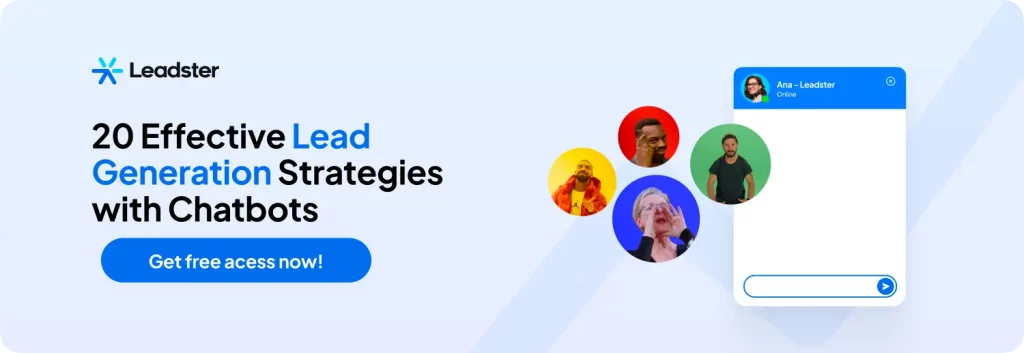
Paragraph Structure
In general, ChatGPT is quite verbose — in the sense of talking a lot. 😅
ChatGPT’s paragraphs are quite dense and often unnecessarily so. It is not very good at breaking lines, which is not a good practice for online content.
Usually, online content needs white space throughout the article to avoid overwhelming the reader. Always remember that your reader has millions of options at their fingertips. Why read a tiring article?
This is something you can specify directly in the ChatGPT prompts. Ask it to go easy on long paragraphs. You can even specify how many words per paragraph it can write.
📢 More on this: 21 Artificial Intelligence Apps for Mobile and Desktop
Common Phrases and Words
ChatGPT has a very specific way of conversing. It’s a generic way that doesn’t work with any persona, and no matter what you do, at least in the free version, it will always talk this way.
You will find several connectors that repeat in almost every article you create with ChatGPT. The most common are:
- However
- Therefore
- Based on…
- According to…
- Adverbs in general (notoriously, casually, coincidentally, etc.)
- Notably
- Exemplifying
Among other examples. Over time, you will be able to identify most of these connectors that always repeat in your articles.
It’s always a good idea to remove them because they end up making your article look too much like Artificial Intelligence, which is problematic due to the generic and repetitive tone they have when used in more extensive and long content.
Introduction – Development – Conclusion
Due to its training primarily in corporate blogs, ChatGPT has not only a specific way of speaking but also a standardized structure that it rarely changes.
Articles for blogs, for example, will always follow the same formulaic structure of Introduction — Development — Conclusion, and this is not necessarily bad.
In fact, it’s not bad at all because the article you are reading now follows this pattern, despite being written by a human — me. 😛
The issue is the lack of variation and the standardization of the structure as the main objective of the article. This is the basics for any writing, including all high school essays.
The Introduction always presents a quick summary of the topic. The Conclusion always brings a shallow call to action. And the Development always uses topics and separators but rarely cites examples, studies, or even links.
This is an important part of the review. The article comes structured from ChatGPT, but structure is not everything — content is what matters.
The Most Common Errors of ChatGPT
Generative AI makes mistakes, and it makes a lot of them. For you to have an idea, at the launch of Bard (Google’s AI) in Paris, the tool made a public mistake a few hours earlier in its own advertising material.
This was in February, and Alphabet, Google’s holding company, lost about $100 billion with a drop in its shares, according to Reuters.
And the mistake made was one of the most common: an invented fact. In the demo, the prompt asked Bard to say an impressive fact about the James Webb Telescope. It replied that this telescope took the first photo of a planet outside the solar system.
The problem: the first photo of one of these planets had already been taken 14 years earlier, in 2004. 🥲
Due to the stochastic model — I said we would talk about this again — factual errors are quite common with AIs. This is because the response is not wrong from this perspective.
The delivery of the article was 100% correct. The language is natural and convincing. But the facts take a back seat due to the difficulty that AIs have in reasoning and cross-referencing data.
Step by Step for Using ChatGPT for Writing and Copywriting

Reading up to this point, it seems like I’m doing propaganda against ChatGPT. But far from it: I’m advocating for its responsible use and as a tool that helps create articles, not something that creates anything ready-made.
Even human articles do not go without review in advertising. Everything needs to be briefed, reviewed, and adapted. It wouldn’t be different with ChatGPT articles.
The tool is great and represents a huge paradigm shift in the world of writing, as long as we know how to make the best use of it.
And that is exactly what we are going to talk about now. Come with me to discover how to create the best possible article using ChatGPT:
1 – Use of the Tool by a Writing Professional
This point is quite important. One of the biggest fears of a writing professional is losing their job to ChatGPT.
We even have a webinar that addresses this point and others related to the future of marketing. Bookmark it to watch later 😉
Can this happen? It can. But over time, we’re realizing that without this professional, articles end up with the defects I mentioned earlier: hard to read, lengthy, and generic.
A writing professional knows how to edit a good article. They also know the characteristics of a good article, which influences the quality of prompts and the research itself for creating a ChatGPT article.
And look: even though ChatGPT provides research and responds to prompts for this purpose, it’s still necessary to read extensively from other sources. More on this in the next sections.
2 – Pre-research for Fact-Checking
Just because ChatGPT is saying something doesn’t make it an absolute truth.
In fact, quite the opposite: it’s always good to doubt ChatGPT.
Pre-research doesn’t fully explain what you really need to do when creating ChatGPT articles. You need to research all the time.
First, initial research for creating the briefing and the prompt. Then, continue researching to conduct thorough fact-checking and cut out any errors that may arise.
This is also interesting to enrich your article. You will find several new pieces of information that ChatGPT may have overlooked in drafting the article.
And this is what differentiates a useful article from a non-useful one in the eyes of Google. Or at least one of the factors in this great mystery. 🧙♂️
3 – Development of ChatGPT Prompts
This point is also extremely important. Through ChatGPT prompts, you have enormous control over the final outcome of your article.
Think of it as a comprehensive briefing. The more detailed it is, the better your article will be.
And the good thing is that ChatGPT follows the prompt quite strictly, which is difficult to find in human writers who always let something slip here and there.
For example: you can ask ChatGPT to write exactly the number of words you want per section of the article.
Or divide the article precisely the way you want.
The example I gave earlier also counts: “I want an article with 700 words but no paragraph can have more than 50,” for instance, is a way to ensure the readability of your article.
4 – Critical Reading and Thorough Review of the Article
Everything we’ve discussed so far is to get to a finished article. Then, you need to read it to understand if it’s really good and suitable for publication.
This step is fundamental but the most neglected in agencies and marketing departments. It’s the classic “just revise later,” but that later takes quite a while to arrive, if it arrives at all.
Reviewing is important because this whole process so far puts you face to face with the article, and your vision ends up being very focused. When the article is ready the way you want it, leave the room, have a coffee, listen to some music to distance yourself a bit.
After this break, come back and read — preferably aloud 😬 — what ChatGPT delivered to you.
Look for generic passages, generalizations, overly formal language, and repetitions in connectors and adverbs — these are ChatGPT’s biggest Achilles’ heels.
5 – SEO Optimization
You can ask ChatGPT to deliver an article fully optimized for SEO, but it’s still good to check afterwards.
An addendum to this: most articles on website optimization for SEO on the internet are quite outdated.
Many of them talk about keyword density, for example, as if it were a big law. But this concept has been set aside for years by Google itself.
It’s important to have keywords and have them well-positioned, but you no longer need to place an exact number or a perfectly matching correspondence.
Look for broader issues for this optimization. Check the structure of the article, if it has a good hierarchy of headers, if it has images, if the attributes of these images are correct, if it has video resources, etc.
This is what really makes a difference today in SEO: showing Google that your content is truly useful and valuable to the reader.
6 – Publication and Monitoring
And how do you know if the ChatGPT articles you’re producing are really working for your strategy?
Or better yet: how do you know if you’re achieving the coveted useful content?
There’s only one way: publish everything on WordPress and monitor your site’s and pages’ development daily through Google Analytics.
This is the final step for producing and monitoring a good article using ChatGPT, and actually it shouldn’t even be here.
That’s because this is a constant job that you will always need to do not only to check the quality of your articles but also to know how your own site is doing.
I could suggest some tools that do this work of creating and publishing ChatGPT articles here, and they already exist. But the market is still very new and it’s difficult to know if they follow true SEO best practices for now.
We have two articles about Google Analytics here on the blog. It’s worth checking them out:
FAQ and myths about ChatGPT articles for marketing

Well, we’re almost at the end of the article, but we still have some important points to discuss.
Using ChatGPT to produce advertising texts is already popular worldwide. Everyone is doing it, but not everyone is doing it right.
Throughout the article, I’ve focused on longer production, especially for blogs, scripts, and e-books. But ChatGPT can also be used much more simply for ads, for example.
We ourselves here at Leadster have a feature with ChatGPT. At the end of the article, we’ll discuss it further.
But now I wanted to bring a general FAQ with some truths and myths about ChatGPT for any media and promotion channel.
Can you tell if a text was written by ChatGPT?
Today, it’s impossible to guarantee with 100% certainty if a text was written by ChatGPT. You can be suspicious and be 90% sure, but know for sure? You can’t.
That’s because we’re dealing with language. A person, for example, can very well make a text absolutely similar to ChatGPT.
Because of this, there’s no tool today that can guarantee if a text is generated by AI or not. There are some that claim they can, but it’s impossible.
ChatGPT itself can tell you that it can identify, but the results are hit or miss. Sometimes it gets it right, other times it doesn’t.
Does Google penalize ChatGPT texts?
As we’ve seen throughout the article, initially Google had a much “heavier hand” approach with Artificial Intelligence texts.
In fact, that was Google’s intention, but it’s very difficult to say if they really managed to implement it in their first Helpful Content update back in 2022.
Today, that no longer exists. Google doesn’t penalize or will penalize texts solely because they are created by AI.
Because that would be quite unfair. Ad headlines on Google Ads would also be penalized? Of course not, or Google would quickly lose money.
And videos on YouTube? And ads in YouTube videos?
Precisely to avoid this issue of one rule for one and another for another, Google decided to backtrack and not bother with ChatGPT.
But remember what we discussed earlier: the important thing is that the content is useful and of quality.
Does ChatGPT tell lies?
I wouldn’t say exactly lies, but ChatGPT and other AI tools that produce text are notorious for delivering some incorrect data here and there.
It’s still unknown when or even if this will change. The stochastic model brings this issue by design.
Due to the probabilistic approach word by word, it becomes impossible to verify the accuracy of entire passages in some cases, which leads to errors.
Does ChatGPT have internet access?
New information: ChatGPT already has internet access and uses it to offer personalized answers with more guarantees.
But an addendum: this is the result of a partnership with Microsoft, by far the largest sponsor of OpenAI. The functionality is available to ChatGPT Plus users through a new feature called “Browse with Bing.”
You need to set this up in ChatGPT itself. In the settings, look for “Beta features” and activate Browse with Bing.
Then, go back to the ChatGPT home screen, choose GPT-4, and also enable the Browse with Bing beta feature. It’s right in the initial menu.
Is ChatGPT plagiarism under the law?
No! Using ChatGPT is not considered plagiarism in Brazil.
Since there’s still no regulation on the subject, the use of ChatGPT is not considered plagiarism in advertising or even in academic productions.
The issue is that the ChatGPT article, also due to lack of regulation, doesn’t have defined authorship. So it’s possible that you might suffer plagiarism in a piece you create yourself.
Is mass publication a good idea?
As we discussed throughout the article, this is the most sensitive point of using ChatGPT today.
Google didn’t make it very clear, but for those who understand, half a word is enough.
Mass-produced content, with little or no revision and low quality, ends up being categorized as non-useful content according to Helpful Content, reducing your chances of ranking with it.
So what do you think? How do you use ChatGPT on your marketing routines?
Leave a comment below if you have any opinions. We would love to discuss this a little better with you.
If you want to dive deeper, check out our category on Artificial Intelligence here on the blog.
Thanks for reading!



